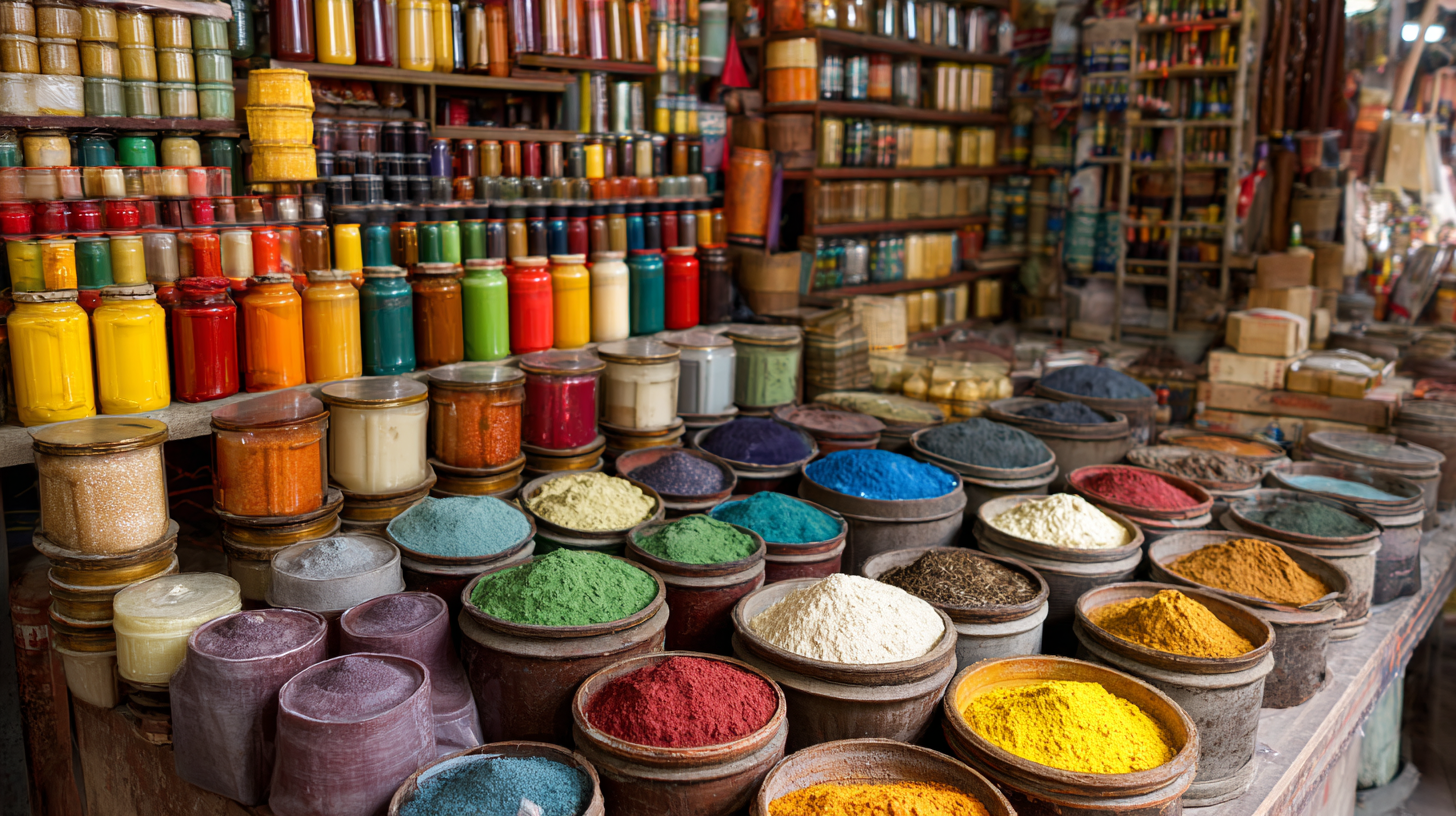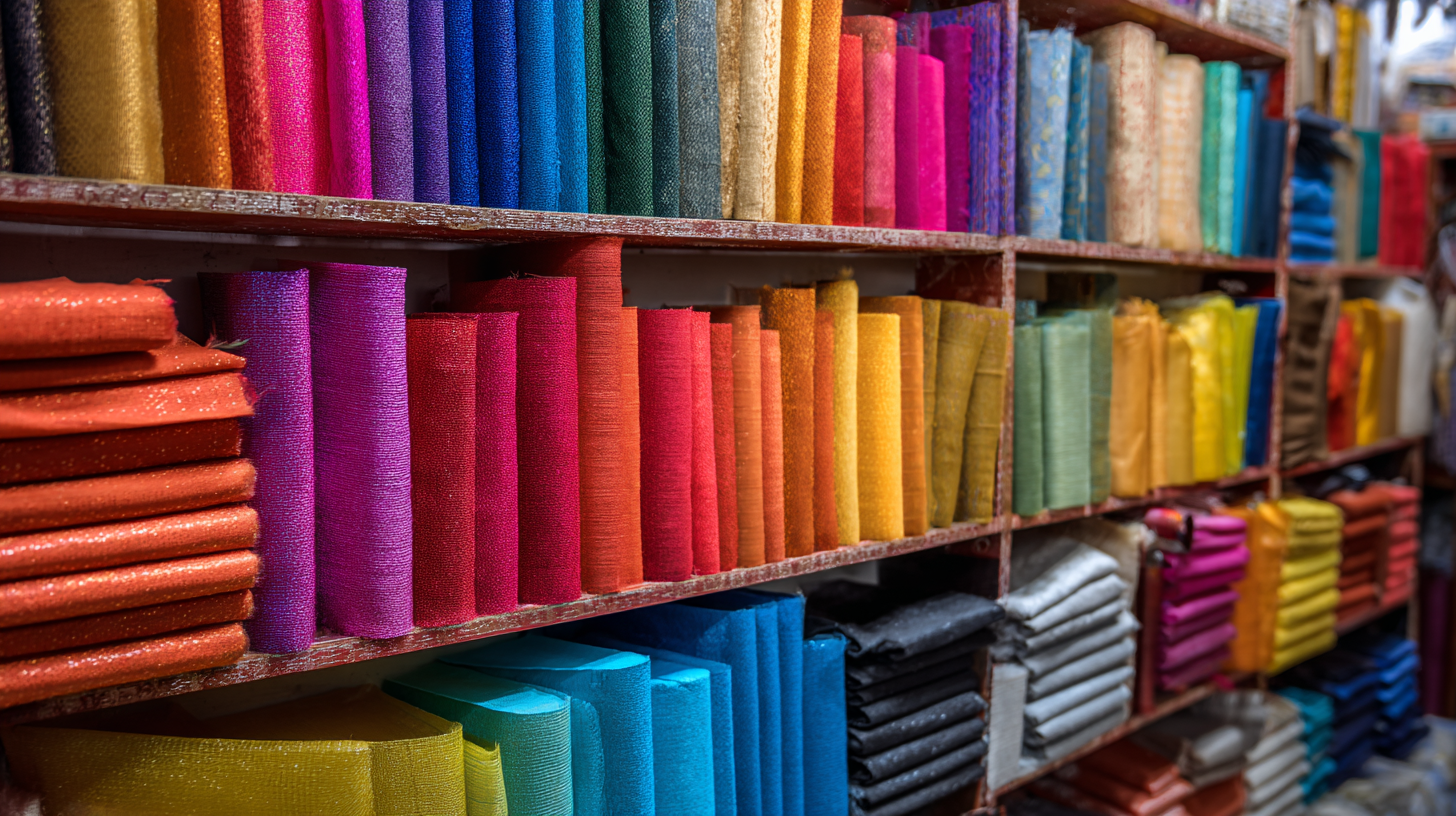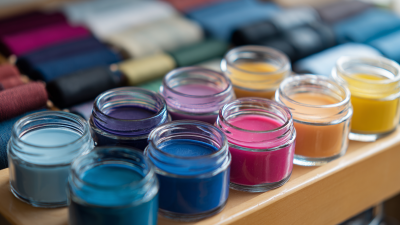The 138th Canton Fair in 2025 is poised to showcase significant insights into the burgeoning demand for Textile Wax, a critical component in the textile industry noted for its diverse applications ranging from fabric finishing to enhancing durability. According to a report by the Market Research Future, the global textile wax market is anticipated to witness a robust compound annual growth rate (CAGR) of 4.2% from 2022 to 2027, driven by a surge in sustainable textile processing and innovations in application techniques. This trend highlights a pivotal shift towards eco-friendly solutions, with suppliers increasingly integrating natural wax alternatives into their offerings. As industry players converge at the Canton Fair, understanding these emerging trends within the Textile Wax sector will be essential for leveraging market potential and aligning with consumer demands for sustainability and quality.

The textile industry is poised for a transformation, particularly highlighted during the upcoming 138th Canton Fair in 2025. Innovations in textile wax production techniques are at the forefront of this evolution, designed to meet the growing demands for sustainable and high-performance materials. Advances such as bio-based waxes and nanotechnology applications are being explored to enhance the properties of textiles, providing better water and stain resistance while being environmentally friendly.
As manufacturers adopt these cutting-edge processes, one crucial tip for industry players is to prioritize research and development collaborations. Engaging with universities and research institutions can foster innovation and lead to the creation of unique textile wax products that stand out in a competitive market. Additionally, keeping abreast of consumer trends towards sustainability can guide the development of new formulations that resonate with eco-conscious buyers.
Moreover, automation and smart technology integration in production lines are set to streamline textile wax manufacturing processes. Companies should focus on investing in advanced machinery that not only increases efficiency but also improves product consistency. Embracing these technological advancements will not only enhance productivity but also position businesses to better respond to the rapidly changing market landscapes anticipated in 2025.
At the upcoming 138th Canton Fair in 2025, the demand for textile wax is projected to see a significant uptick, driven by several key factors. According to a report by Grand View Research, the global textile chemicals market is expected to reach USD 28.6 billion by 2026, growing at a compound annual growth rate (CAGR) of 3.8%. This growth trajectory is largely fueled by rising consumer demand for sustainable and high-performance textile products. Textile wax plays a crucial role in enhancing the quality and durability of fabrics, thus aligning with the industry's shift toward more environmentally friendly options.
Moreover, the increasing adoption of advanced manufacturing technologies is contributing to the rising demand for textile wax. A recent study by MarketsandMarkets forecasts that the global textile finishing chemicals market will reach USD 20.9 billion by 2025, which highlights the growing importance of innovative finishing processes. Textile wax provides essential benefits such as water repellence and surface protection, which are becoming increasingly sought after in technical textiles used in various sectors, including automotive and outdoor apparel. As manufacturers seek to improve product performance in line with environmental regulations, the demand for specialized textile wax solutions is set to grow substantially at the Canton Fair and beyond.
The textile wax industry is witnessing significant shifts, particularly highlighted during the 138th Canton Fair in 2025. Analyzing the supply chain dynamics reveals a burgeoning demand for synthetic polymer waxes. According to a market analysis by Custom Market Insights, the overall market for synthetic polymer wax is projected to grow from USD 1.7 billion in 2025 to USD 2.9 billion by 2035, marking a compound annual growth rate (CAGR) of 5.5%. This growth is driven by increasing applications in the fast fashion sector, which is expected to reach a size of USD 309.8 billion by 2033, growing at a CAGR of 10.9%.

Understanding the supply chain dynamics of the textile wax industry is critical, as it enables manufacturers to adapt to evolving market needs. Factors such as raw material availability, production processes, and distribution networks play a pivotal role in shaping the industry's landscape. With the fast fashion market on the rise, stakeholders are compelled to innovate and enhance their supply chains for synthetic polymer waxes to maintain competitiveness in a rapidly changing environment.
The global textile wax market is experiencing significant growth, fueled by shifting consumer preferences and innovative application trends. As the demand for textile wax continues to rise, a diverse range of applications is emerging, reflecting evolving aesthetics and sustainability concerns among consumers. This aligns with the projected increase in the paraffin emulsion market, expected to grow from $550.7 million in 2022 to $860.3 million by 2030, driven by a compound annual growth rate (CAGR) of 5.7%.

Furthermore, the candle melting market is also on an upward trajectory, projected to reach approximately $6.49 billion by 2033, with a CAGR of around 5.9%. This surge can be attributed to the growing preference for handmade, artisanal candles, which are perceived as more environmentally friendly and customizable. As consumers seek products that resonate with their values, businesses are increasingly tailoring their offerings to meet these demands, highlighting the importance of understanding consumer behavior in the textile wax sector. The 138th Canton Fair in 2025 is expected to showcase these emerging trends, providing valuable insights into market dynamics and future opportunities.
At the 138th Canton Fair 2025, the spotlight on sustainability in textile wax manufacturing highlights a significant shift in industry practices. According to a recent report by Grand View Research, the global textile wax market is projected to reach $1.02 billion by 2027, driven by increasing environmental regulations and consumer demand for sustainable products. Textile manufacturers are increasingly adopting eco-friendly wax alternatives derived from natural sources, such as soy and beeswax, which not only enhance the performance of textiles but also reduce the carbon footprint associated with traditional synthetic waxes.
In response to these trends, many companies are rolling out sustainability initiatives aimed at reducing waste and promoting circular economy principles. A study by Mordor Intelligence indicates that around 45% of textile manufacturers are now investing in biodegradable wax solutions as part of their greener production strategies. These innovations not only cater to an environmentally conscious consumer base but also align with global sustainability goals, reinforcing the industry's commitment to responsible manufacturing practices. The integration of such sustainable approaches at the Canton Fair addresses growing market demands and sets a clear direction for the future of textile wax production and utilization.






